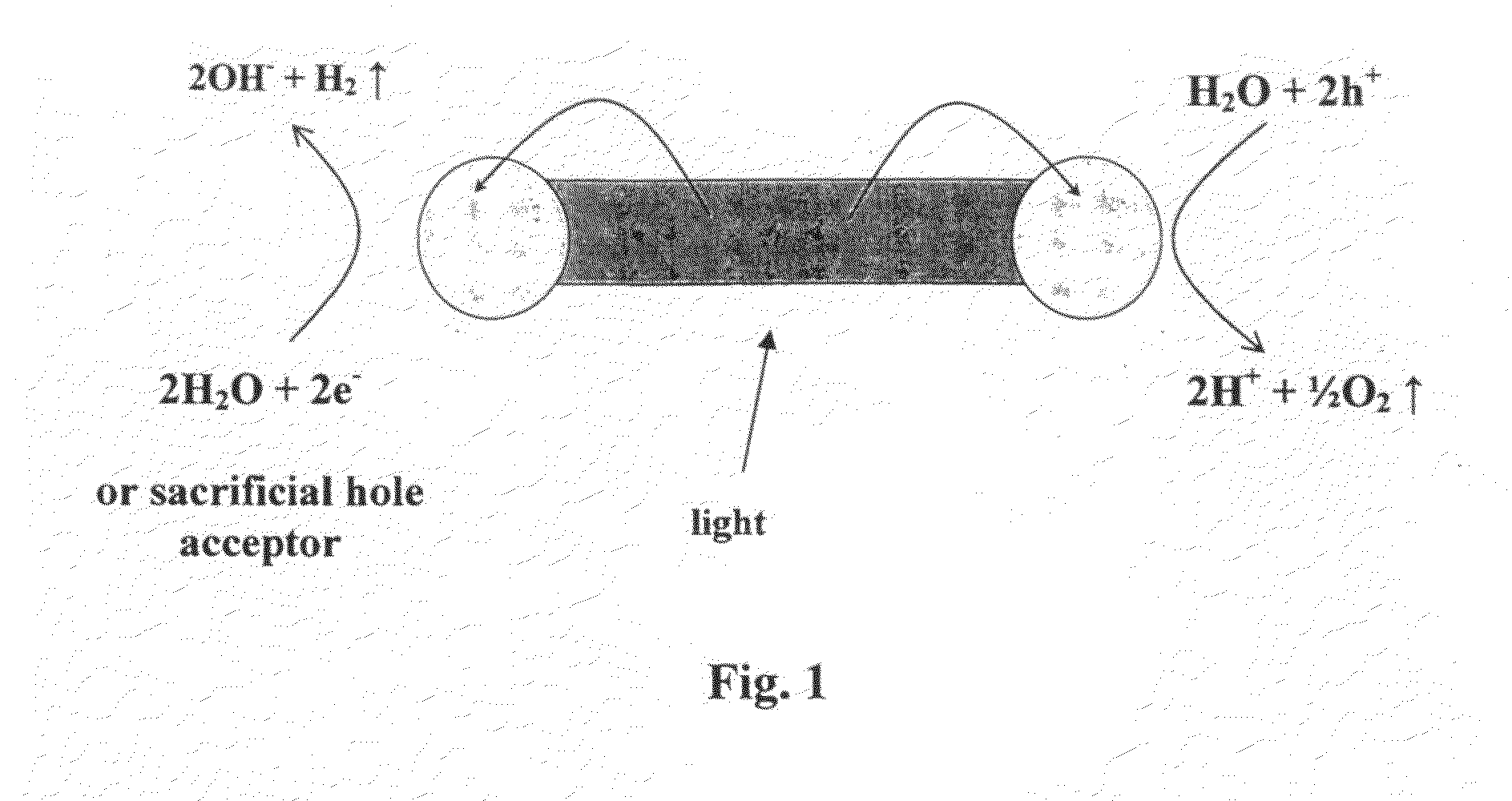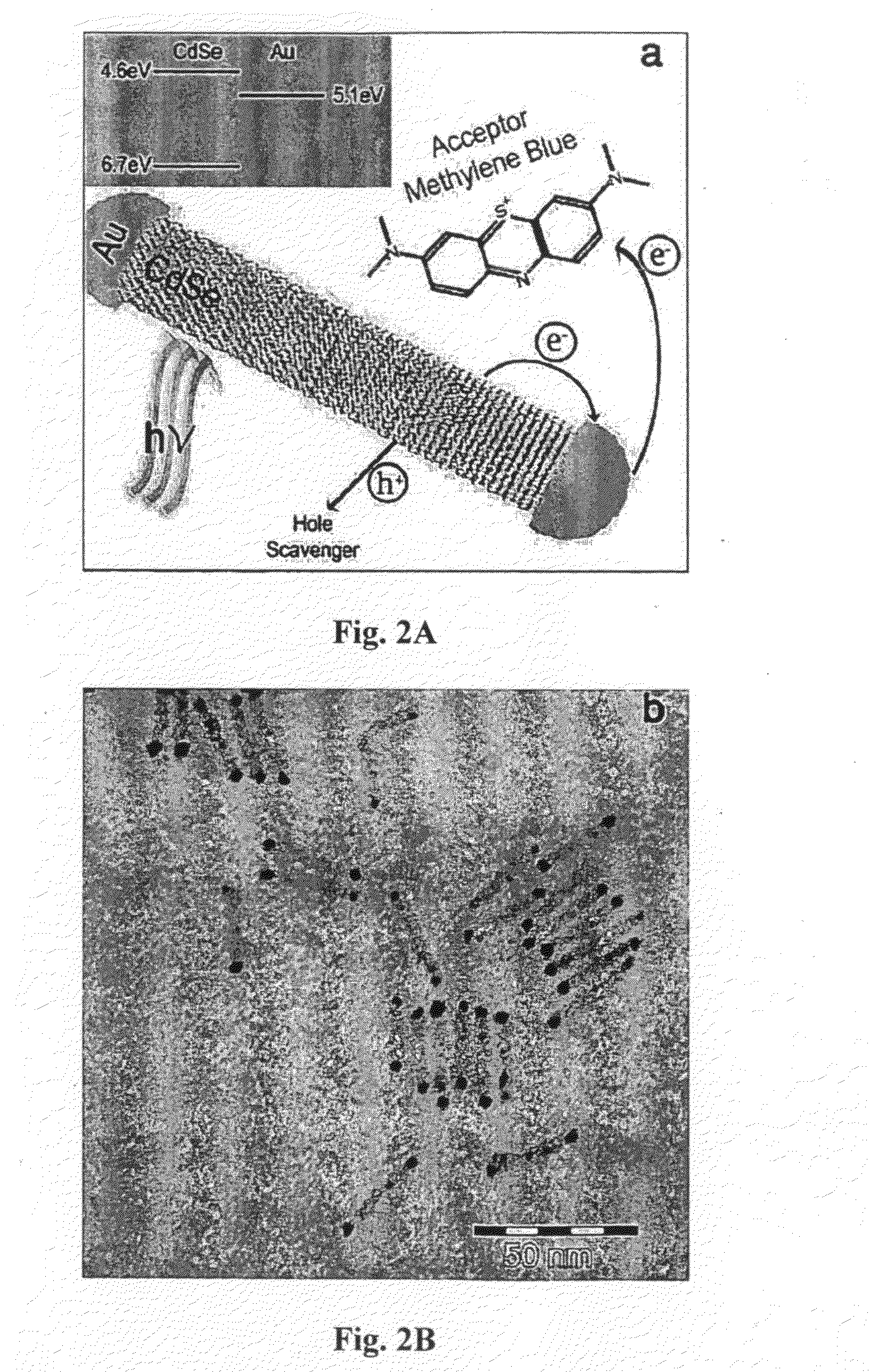Hybrid metal-semiconductor nanoparticles and methods for photo-inducing charge separation and applications thereof
a technology of metal-semiconductor nanoparticles and photo-inducing charge separation, which is applied in the direction of nanoinformatics, energy input, physical/chemical process catalysts, etc., can solve the problems of limited photocatalytic activity efficiency, limited examples of semiconductor-metal systems for photocatalysis, and severe limitations of semiconductor-metal applications of photocatalysts, etc., to achieve efficient utilization of the whole range of wavelengths, improve control
- Summary
- Abstract
- Description
- Claims
- Application Information
AI Technical Summary
Benefits of technology
Problems solved by technology
Method used
Image
Examples
Embodiment Construction
[0193]Visible light photocatalysis is a promising route for converting solar energy to chemical energy. Semiconductors and metal-semiconductor hybrid materials have been studied as photocatalysts in photochemical water-splitting to produce hydrogen, in photoelectrochemical cells and in photochemical purification of organic contaminants and bacterial detoxification. So far, semiconductor / metal hybrid photocatalysts were based mostly on wide-gap semiconductors limiting their applicability to the UV range, which consists of less than 5% of the solar spectrum. Additionally, they were poorly controlled in terms of the semiconductor particle and metal island size, shape and location thus limiting their understanding and controlled improvement.
[0194]The inventors of the present invention demonstrate the visible range photocatalytic activity of highly controllable hybrid gold tipped CdSe nanorods, herein termed nanodumbbells (NDBs). As stated above, following light absorption, rapid charge ...
PUM
| Property | Measurement | Unit |
|---|---|---|
| wavelengths | aaaaa | aaaaa |
| length | aaaaa | aaaaa |
| length | aaaaa | aaaaa |
Abstract
Description
Claims
Application Information
 Login to View More
Login to View More - R&D
- Intellectual Property
- Life Sciences
- Materials
- Tech Scout
- Unparalleled Data Quality
- Higher Quality Content
- 60% Fewer Hallucinations
Browse by: Latest US Patents, China's latest patents, Technical Efficacy Thesaurus, Application Domain, Technology Topic, Popular Technical Reports.
© 2025 PatSnap. All rights reserved.Legal|Privacy policy|Modern Slavery Act Transparency Statement|Sitemap|About US| Contact US: help@patsnap.com



